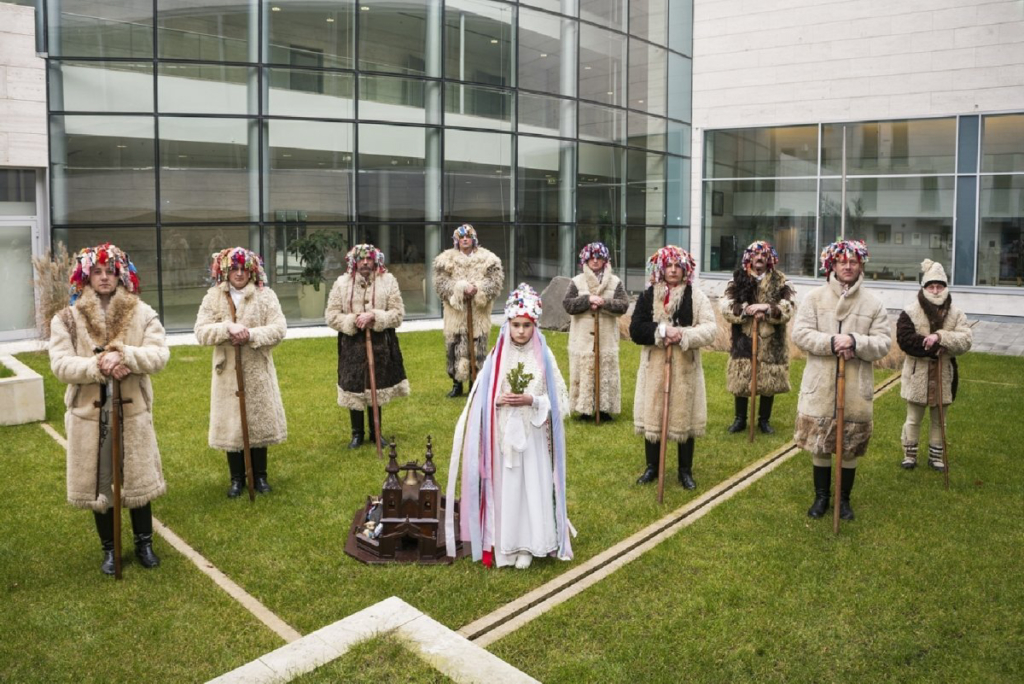Péter Korniss: Betlehemes (Nativity Play)
2016. Nov. 27. - 2017. Feb. 19.

Péter Korniss has been photographing folk customs since the beginning of his career. One of the richest Hungarian dramatic performances is the nativity play. This time, MODEM is exhibiting twenty-one large-format photographs, ten of which are owned by the Déri Museum.
His so-called “staged” nativity scene photos depict the folk custom and its evokers in a wide variety of settings: the nativity scene performers appear in the courtyard of the contemporary exhibition space, in a housing estate, and in the interior of a shopping center.
Péter Korniss first worked in Szakmár in Bács-Kiskun County, then in Kakasd in Tolna County, where Székely people from Bukovina settled in 1945. He then moved to the village of Vörs in Somogy County. He photographed the nativity plays in the village and the events taking place in the houses, as the members of a small community reenacted and commemorated the story of Jesus’ birth in memory of the Savior. The pictures were taken for Tekla Dömötör’s book Hungarian Folk Customs.
The world, including the village and its traditions, has changed. And the relationship to tradition has also changed. One of the main characteristics of Péter Korniss’s entire oeuvre is his capture of this change. Around the turn of the millennium, he took his first staged nativity scene photographs. He was guided by the idea of using the visual tools of advertising photography to show what remained of the past. The composition of the settings evokes the images of former (itinerant) photographers. One important feature of these is their solemnity: the way the subjects wanted to be immortalized for their descendants, for eternity. This is how the staged, arranged images of the members of the traditionalist groups were created in front of a portable, neutral background.
These photographs gave rise to the book Betlehemes (Nativity Play). Even after this, Korniss was still preoccupied with capturing the tension between tradition and the present. The solution came with the Betlehemes Találkozó (Nativity Scene Meeting), which moved to Debrecen in 2006. He photographed the groups where they performed. The photographer “only” arranged the performers at the given location. This is how the stylized images were created in shopping malls, housing estates, bus stops, in front of graffiti walls, and in contemporary art museums.
Korniss learned from ethnographers that a folk custom begins to die out when only children perform it. In his latest “Debrecen” series, however, he exclusively photographed groups of adults. Those who are still authentic representatives, guardians, practitioners, and practitioners of folk customs today. The photos thus create not only tension between folk customs and unusual locations, but also balance. Balance between the past and the present.
Curator: Szoboszlai Lilla
Artist: Korniss Péter

